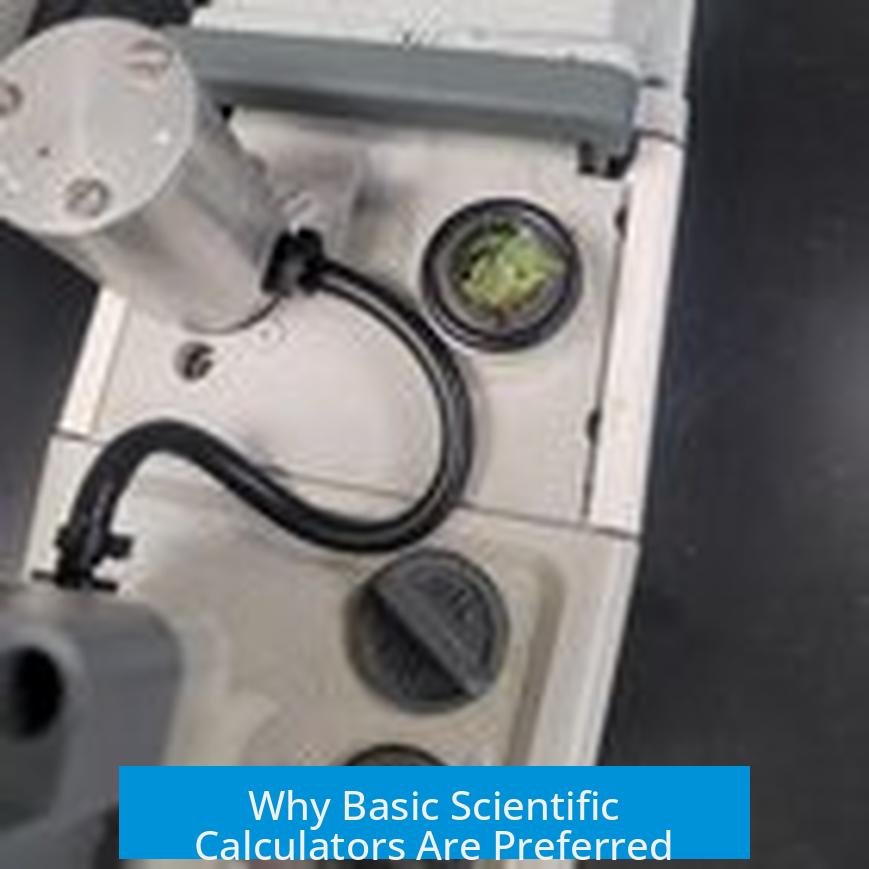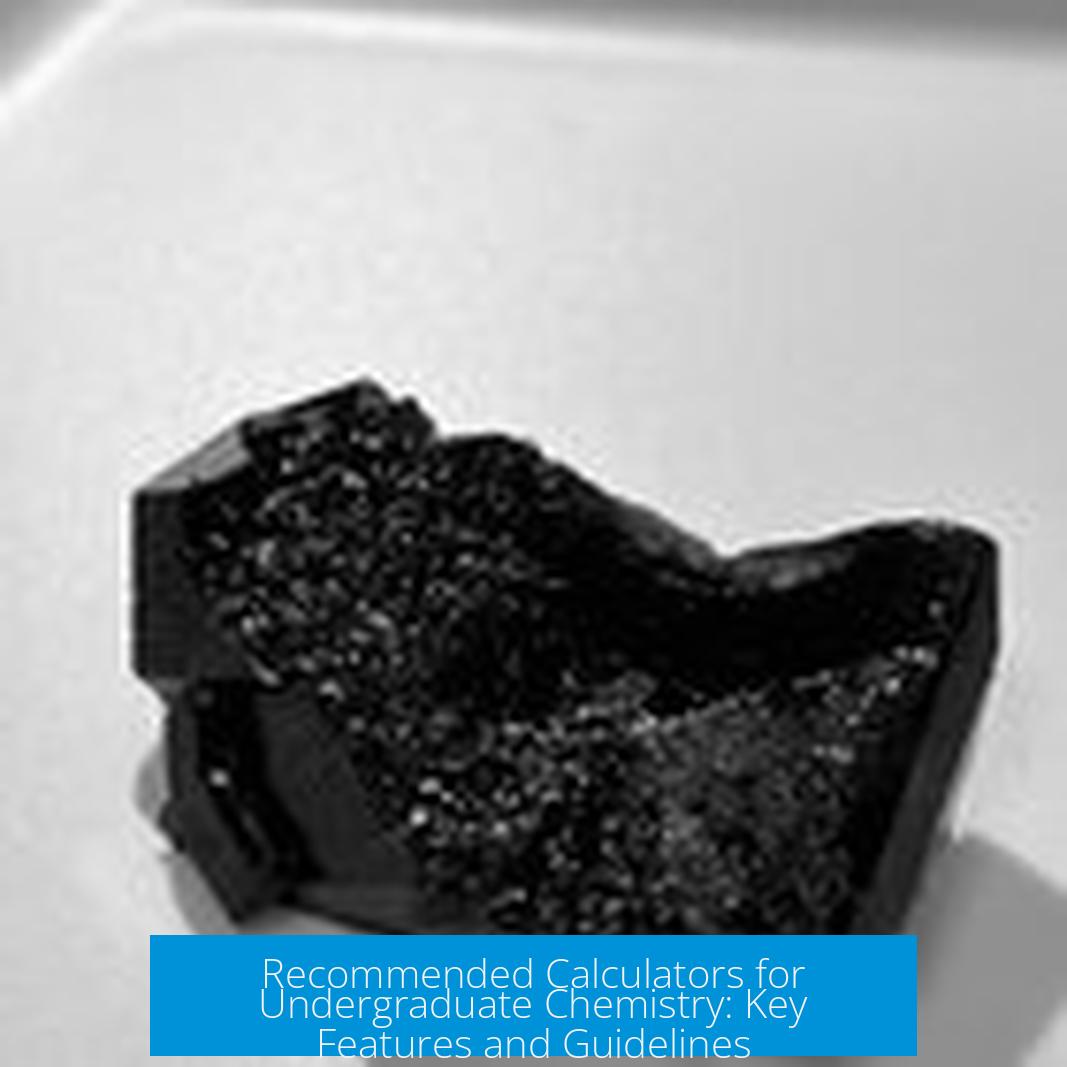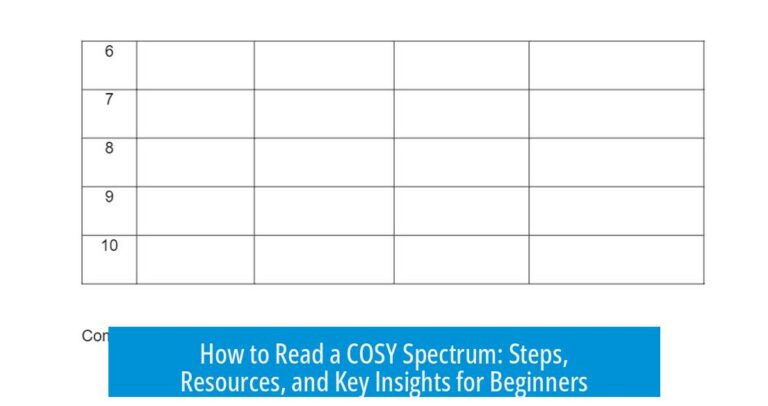The recommended calculator for undergraduate chemistry is a basic scientific calculator like the TI-30X IIS or TI-36X Pro. These models balance functionality that supports chemistry calculations while meeting typical exam restrictions banning graphing and programmable calculators.
Why Basic Scientific Calculators Are Preferred

Undergraduate chemistry courses focus on calculations that need standard scientific functions, such as logarithms, trigonometry, exponentials, and basic arithmetic operations. Most exams ban graphing calculators and programmable models because they can store formulas or programs, which presents academic integrity issues.
Instructors often recommend a basic scientific calculator around $10 to $20 in cost. These calculators cover common chemistry operations and align with university policies that forbid graphing capabilities.
- Simple scientific calculators avoid complexity and distraction.
- They operate reliably during timed exams without programming concerns.
- Devices like phones or graphing tools are not permitted or practical during exams.
Thus, a basic scientific calculator efficiently handles requirements such as natural logarithms, exponential calculations, and scientific constants.
Examples of Basic Scientific Calculators
- TI-30X IIS: Priced between $10 and $20, this calculator can display equations clearly and stores variables, but it is not programmable or graphing. It is widely accepted and recommended by chemistry educators.
- TI-36X Pro: This advanced scientific calculator offers numerical integration and derivatives, polynomial solvers, built-in scientific constants, and unit converters. Despite added features, it remains non-programmable and non-graphing, making it suitable for the American Chemical Society (ACS) standardized exams.
- Casio FX-83GT and Casio fx-82AU Plus II: These are popular calculators internationally among chemistry students. They provide necessary scientific functions and are exam compliant.
Why Graphing Calculators Are Often Not Recommended
Graphing calculators like the TI-84 series come with extensive functionality, such as plotting graphs, solving calculus problems, and storing complex programs. However, these features rarely apply to introductory or general chemistry courses. Integration and derivatives, common in physics or engineering, are rarely necessary in typical undergrad chemistry exams.
Additionally, many institutions ban graphing calculators during exams to prevent unauthorized material storage and cheating. Using graphing calculators risks damage in lab settings, and their high cost makes replacement less practical.
- Many universities prohibit graphing calculators in general chemistry classes.
- Graphing calculators add features unnecessary for most undergraduate chemistry problems.
- Students performing physical chemistry may find a TI-84 helpful, but this is a minority case.
Alternatives and Special Cases
- HP Prime: Another graphing calculator, acceptable in some contexts but requires instructor approval.
- HP 35S: A scientific but programmable model allowed where graphing calculators are banned.
- TI-89: Often considered overqualified and disallowed for standard exams.
Exam Usage Policies Affect Calculator Choice
Undergraduate chemistry exams often have strict policies against programmable or graphing calculators. Programs that store equations or enable downloading content during exams increase the risk of academic dishonesty and piracy of test materials.
These rules lead to a consensus on using simple scientific calculators which cannot retain programs or equation templates. Students should always check the syllabus or exam instructions to confirm allowed calculators.
- Non-programmable, non-graphing calculators are almost always permitted.
- Schools may ban calculators with equation-storage functionalities.
- Students often carry two calculators to exams for backup.
Advanced Scientific Calculators for Enhanced Functionality
Some students prefer calculators with advanced scientific functions that remain compliant with exam policies. The TI-36X Pro stands out as a model that includes:
- Numerical integration and differentiation.
- Polynomial solvers up to third degree.
- Built-in scientific constants like speed of light and Planck’s constant.
- Unit conversions.
This model suits students in chemistry, engineering, or physics who need more computational power without moving into graphing calculators. It is accepted during ACS and other standardized chemistry exams, making it suitable throughout the undergraduate program.
Use of Technology Outside Exams
While handheld calculators serve well during exams, practical work and research often rely on more powerful computational tools:
- Computers with software like MATLAB, Python, or Wolfram Alpha handle intensive chem calculations.
- Smartphone apps can perform more complex functions but are typically not allowed in test situations.
- Simple solar-powered calculators suffice at lab benches or for routine calculations.
For undergraduate chemistry study, mastery of basic scientific calculator use combined with software proficiency prepares students well.
Comfort and Reliability Considerations
Comfort in using a calculator increases accuracy during timed assessments. Students should choose models with:
- Clear displays that show input and output equations.
- Durable build quality for frequent daily use.
- Key arrangements familiar to the user.
High-end graphing calculators like the TI-89 offer expanded features but are unnecessary and not permitted for most chemistry exams. Basic models suffice.
Summary Table of Recommended Calculators
| Calculator Model | Type | Notes | Exam Usage Allowed? |
|---|---|---|---|
| TI-30X IIS | Basic Scientific | Displays equations, stores variables, $10-$20 | Yes, typically allowed |
| TI-36X Pro | Advanced Scientific | Numerical integrals and derivatives, polynomial solvers | Yes, including ACS exams |
| Casio FX-83GT | Basic Scientific | Standard undergrad chemistry calculator | Yes |
| Casio fx-82AU Plus II | Basic Scientific | Reliable and simple | Yes |
| TI-84 | Graphing | Useful for P Chem, expensive, often banned | Often banned |
| HP Prime | Graphing | Allowed with approval | Conditional |
| HP 35S | Scientific | Alternative if graphing disallowed | Conditional |
| TI-89 | Advanced Graphing | Comfortable but typically banned | Often banned |
Key Takeaways
- Basic scientific calculators like the TI-30X IIS cover all general chemistry needs and are broadly accepted.
- Advanced scientific calculators such as the TI-36X Pro add functionality but remain exam-allowed.
- Graphing calculators are generally banned due to their capabilities and cost.
- Policies vary, so always confirm allowed calculator types with the course syllabus or instructor.
- Calculator comfort and reliability play a role in effective use during exams.
- Computers and mobile apps handle complex calculations outside exams.





Leave a Comment